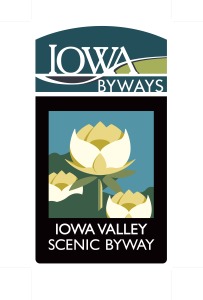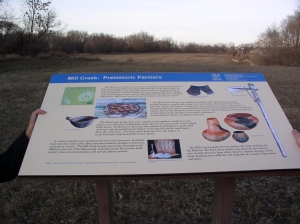Iowa’s Scenic Byways are among the state’s best-kept secrets.
Each of Iowa’s nine state-designated and two nationally-designated byways offers a great way to experience the natural beauty, history and culture of the state. Now, more people will be able to learn about the landscape of the byways and what conservation systems are used to improve them.
The Iowa Valley RC&D provided the following about a grant awarded to the byways that will help promote awareness and provide information through the development of interpretive panels:
Earlier this year, the Iowa League of RC&Ds was awarded a Resource Enhancement and Protection (REAP) Conservation Education Grant to support the development and installation of interpretive panels to be placed along Iowa’s scenic byways.
Warren Johnson, Executive Director for the Iowa League of Resource Conservation and Development Areas said, “The goal of this project is to provide information and education about Iowa’s natural resource landscapes and the innovative conservation systems that are being used to protect and preserve them. The target audience will be people traveling Iowa’s Byways which will include local people living on or near the byway as well as travelers from other parts of Iowa, other states and other countries The focus of the project will be to provide information and education about the landscapes and soils seen from the Byways and how Iowa’s agricultural producers are utilizing conservation systems to manage and optimize nutrients, reduce downstream sediment and nutrient loads, maintain agricultural productivity, improve grasslands and enhance wildlife habitat.”
REAP- Conservation Education Program funds along with a Conservation Innovation Grant provided through the Natural Resources Conservation Service will enable the project to be implemented along ten National or State designated Scenic Byways in Iowa under the leadership of five local Resource Conservation and Development (RC&D) offices. The participating byways include: the Loess Hills National Scenic Byway and the Western Skies Scenic Byway in western Iowa; Glacial Trail Scenic Byway in northwest Iowa; River Bluffs Scenic Byway and Driftless Areas Scenic Byway in northeast Iowa; Delaware Crossing Scenic Byway, Grant Wood Scenic Byway and Iowa Valley Scenic Byway in east central Iowa, Historic Hills Scenic Byway in southeast Iowa and the Lincoln Highway Heritage Byway in central Iowa.
Each of the participating Byways has established a local committee that will design, locate and install the two educational panels at an accessible public location along the byway. Each of the 20 educational panels will include natural resource conservation information that is unique to the landscapes of the individual byways. The interpretive panels will be developed in 2014 and will be installed in 2015.
The Iowa Valley Scenic Byway in east central Iowa meanders along the Iowa River valley to just beyond the Meskwaki Settlement in Tama to the Amana Colonies. The interpretive panels will feature a pollinator habitat at Red Earth Farms on the Meskwaki Settlement in Tama and a wetland restoration at Big Bend Conservation Area near Marengo, the panels will be placed at the South Tama Recreation Trail along E49 and at Big Bend Conservation Area along V66 respectively.
Since 2008, 10 Iowa Byways have been partnering with Iowa Resource Conservation and Development Areas (RC&D) and the Iowa DOT to help raise awareness and capitalize on the byway designations. Recently new signage has been installed to bring greater visibility to Iowa’s Byways. “All of Iowa’s Byways feature unique natural landscapes associated with agriculture yet little information or interpretation is available to people traveling the byways to help them understand the fragile ecosystems or the sound conservation systems they are passing by. Just as the individual Byway landscapes are different, so are the conservation systems being used to protect them.” Johnson said. The Byways are being promoted as visitor destinations and offer a great opportunity to provide information and interpretation about natural resource conservation systems to a wide range of travelers. Byways attract visitors from local, state, national and even international locations.



No Comments Yet